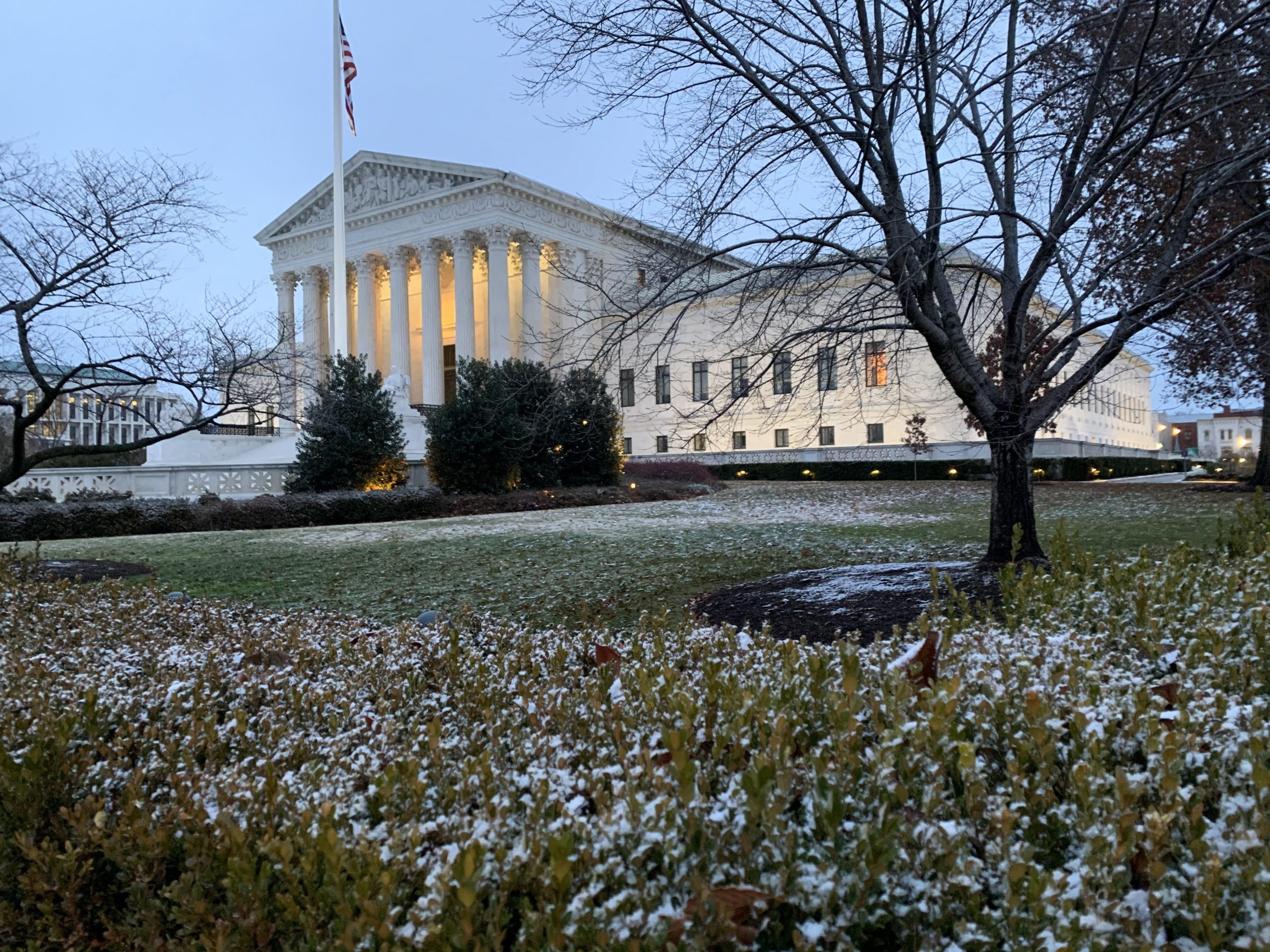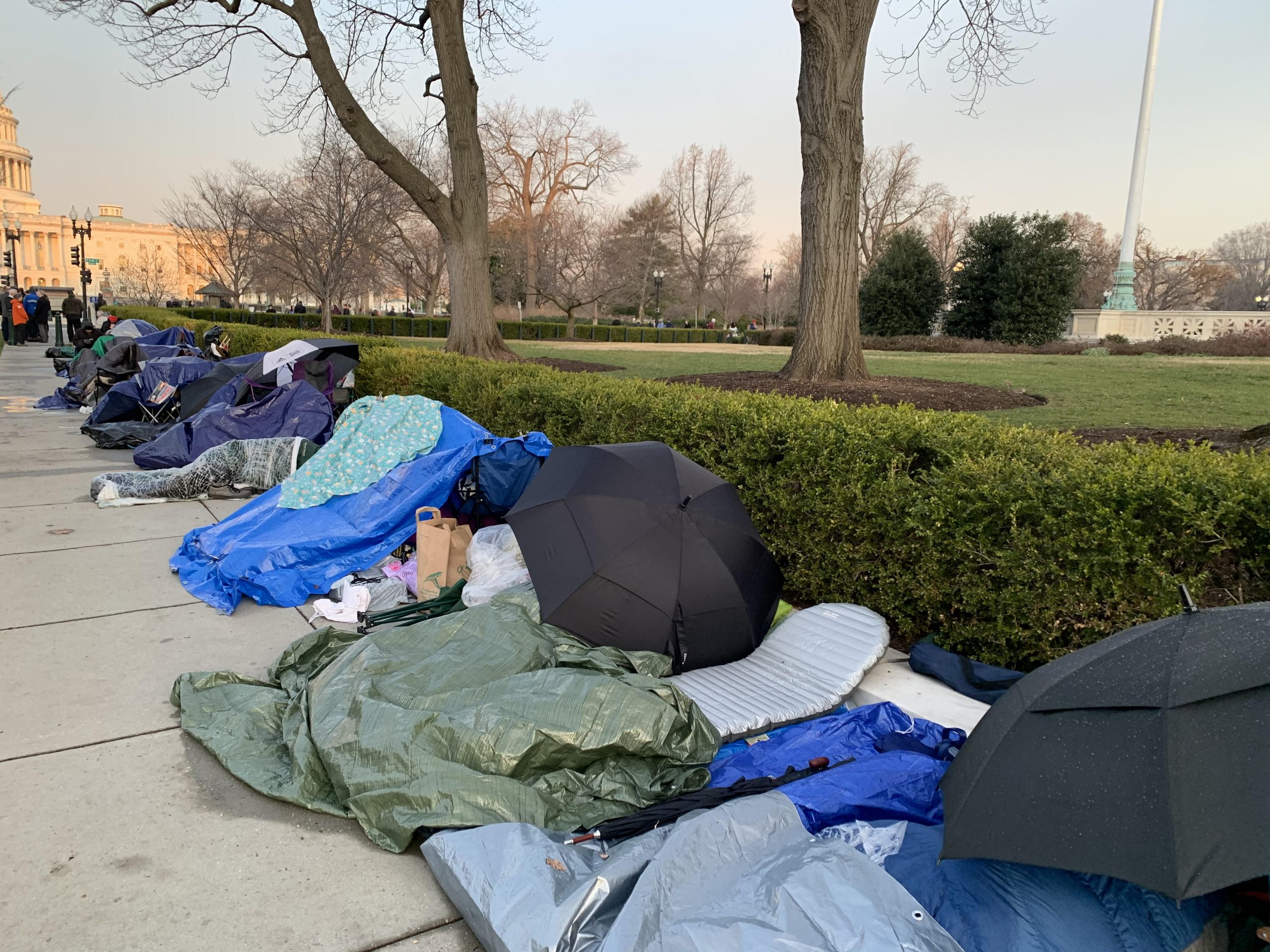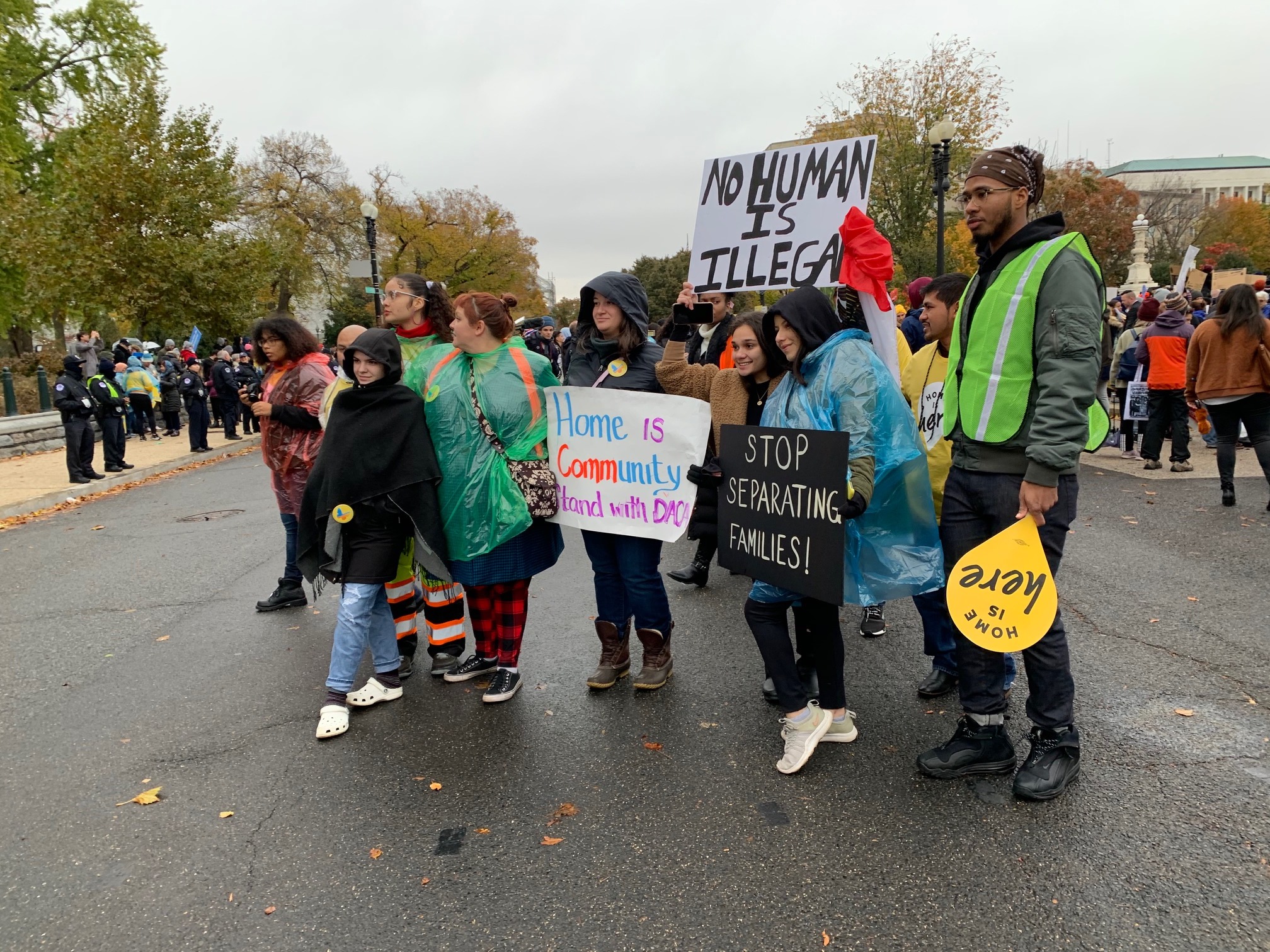Courtroom access
Witnessing a Supreme Court argument in person can be quite the ordeal. With little information displayed on the court’s website, the process to obtain one of the 50 seats reserved each day for members of the public is opaque at best, and frustrating at worst. It requires not only research and preparation, but luck and guesswork, too, none of which may be enough to avoid a long wait in line outside the building – good weather not guaranteed.
During the 2019-20 term, SCOTUSblog researched just how hard it is to get a seat inside the courtroom. Our invaluable reporter Casey Quinlan spent hours at the court each argument day collecting data on the line and interviewing people who traveled from far and wide to see the court in action.

Long lines often await those hoping for a seat in the courtroom (Kalvis Golde)
In April 2020, amid the COVID-19 pandemic that temporarily postponed the spring’s oral arguments, we began a monthlong release of our findings. We highlighted stories of those who waited long hours to get in, investigated inequities in the process and interrogated why the court hasn’t released live audio or video historically. On April 13, when the court announced that it would hold some of the postponed arguments via telephone in May with live audio provided to the public, we discussed the move toward greater accessibility and how the court could continue that progress when in-person arguments resume.
Below you can find a list of all our stories from the project. A few highlights include a breakdown of seating sections inside the court, a deep dive into the business of paying line-standers to hold a spot in line, a podcast by two members of our staff as they waited in line one cold December morning and – finally – results from five months of extensive data collection as well as recommendations for how the court can improve public access in the future.












